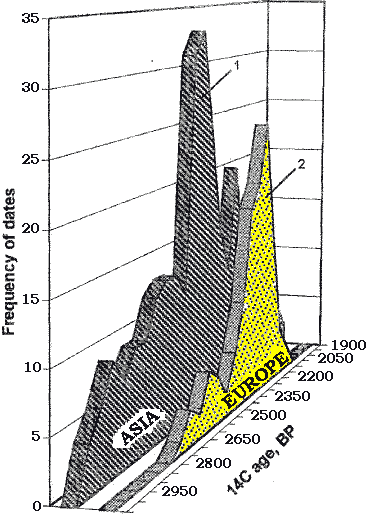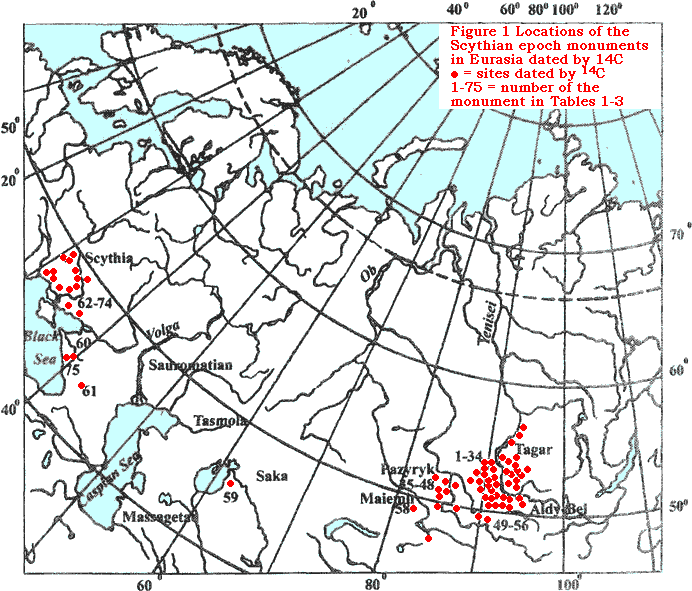Paralats' etymology
Links
Posting Foreword
Posting Foreword
Some speculations about the meaning of the Scythian dynastic tribe Paralat name were always floating around, never supported with any corroborating confirmation, a la “they have para, we have para, so their para is our xxx”. Practicaly, every existing language in the world would readily provide a para- base for patriotic etymology. What should attract an observer is the coincidence of the Scythian name Paralat and the endonym of the Baraba Türks, whose designation “Baraba Türks” grew out of the very late Middle Age Russian misnomer “Baraba Tatars”, at the time when by default everybody non-Russian east of Moscow was a Tatar, much like the term “Indian” in the North America, and with the same scientific justification. The endonym of the Türks in the Baraba Steppe is Paraba, in Russian it was distorted to Baraba, hence the now fossilized Baraba Steppe. Their ethnonym and the toponym of their homeland are Paraba, with the folk etymology of Türkic verb par- and negation -ma = go not, not go (m/b alternation), connecting it with those who did not leave with the Khan Kuchum after the unsuccessful war of 1582-1585 with the Türkic Cossack mercenary Yermak (aka Ermak) in the Russian service. It is believed that the folk etymology is a late reinterpretation of an ancient word, not necessarily of Türkic origin (L.B.Dmitrieva, Baraba//Encyclopedia, The languages of Russia and adjacent states, Moscow, Science, 1997, p. 154).
What is striking is the homophonous name and the homophonous location. The Scythian kurgans marched early in the 1st millennia BC from the Minusinsk Depression and the Baraba Steppes to Europe, drastically affecting and changing the history of the Europe, Middle East, and Mesopotamia. The Scythians from the Minusinsk Depression and the Paraba Steppes were headed by a dynastic tribe transmitted to us as Paralat, which is touching on Türkic paraly = those who do go, or those who are from the par- location, or those who gave the locartion their para- name. At least, in this conjecture we have conjunction of two attested ethnonyms, migration of the same kurgan tradition with the same underlying Tengrian departure on a travel to another world, and the attested homophonic source of the kurgan tradition. It is a long shot that can only be proven by individual genetic comparison of the Paraba population with the genetics of the characters buried in the Scythian royal kurgans, but at least it is not based on pure linguistic exercises divorced of any connection with the real world.
| Fig. 6 Distribution histogram for all 14C dates for Scythian time monuments of 1st-3rd periods (Note that the timescale stops at 100 AD, while the kurgans kept on going up until present) |
Fig. 1 Locations of 14C dated Scythian Epoch monuments in Eurasia |
|---|---|
 |
 |
Citations
Paralates - Scythian clan, descended from Koloksai, a younger son of Targitai.
M.I.Artamonov linked Paralat with Pals, reported by Diodorus Siculus. M.I.Artamonov
believed that Pals-Paralates came from Asia, while Scolots were autochthonous inhabitants
of the Black Sea (Tr. parala = hack, from par = piece; Tr.
paralt = shine, to shine, make shining; because of their homophony, the name Paralat
could have meant both meanings at the same time. Additional flavor could have come from a
derivative bala = younger, son, reflecting the Koloksai's mythological origin of a
younger son. The combination of suggested individual and collective etymologies fits
perfectly with the mythological destiny. On top of it, a Tr. balta (voiced) = palta
(voiceless) = axe/sword/halberds lurks along, standing for the heavenly axe/sword that
fell to the Koloksai's destiny. The division of the Scythians into two categories,
professional, or full-time warriors, and the rest, who are militia, per Diodorus Siculus,
and contrary to M.I.Artamonov, is an economico-social division, and has nothing to do with migrations [Z.Gasanov
“Royal Scythians“, NY, Liberty, 2002, ISBN 0-9144881-61-4,
Scythian Poetry]).
M.I.Artamonov, History of the Scythians in Soviet science, VDI, 1947, No 3;
L.A.Elnitskiy, Scythia of the Eurasian steppes. - Novosibirsk, 1977, p. 114 [G.Dremin,
Scythian Vocabulary]